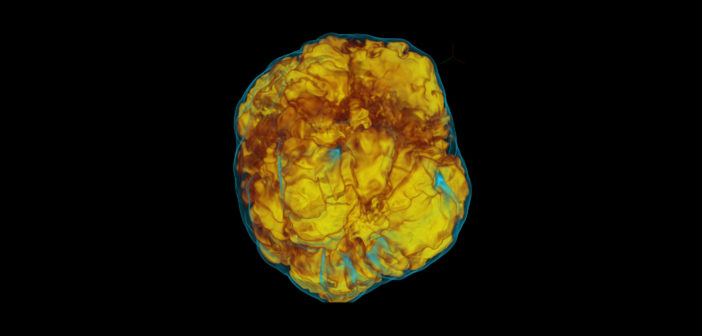Modeling the collapse of a stellar core and the supernova explosion that follows — with the inclusion of all of the complex physics involved in these processes — is notoriously difficult. Even more difficult: doing this in three dimensions. In a new study, Evan O’Connor (Stockholm University, Sweden) and Sean Couch (Michigan State University) present the results of an extensive set of 3D core-collapse supernova simulations that include the physics of transporting neutrinos in multiple dimensions, high-resolution hydrodynamics, and approximate general relativistic gravity. These simulations show that capturing the 3D behavior is critical: the large-scale aspherical motion in the star’s silicon and oxygen shells aids the expansion of the shock and brings the star closer to exploding. The figure below (click for a closer look) shows the difference between two models that do (top row) and don’t (bottom row) include aspherical perturbations in these shells, as the star’s entropy evolves in time from left to right. For more information and images, check out the original study linked below.
Citation
“Exploring Fundamentally Three-dimensional Phenomena in High-fidelity Simulations of Core-collapse Supernovae,” Evan P. O’Connor and Sean M. Couch 2018 ApJ 865 81. doi:10.3847/1538-4357/aadcf7


1 Comment
Pingback: AAS Nova – New